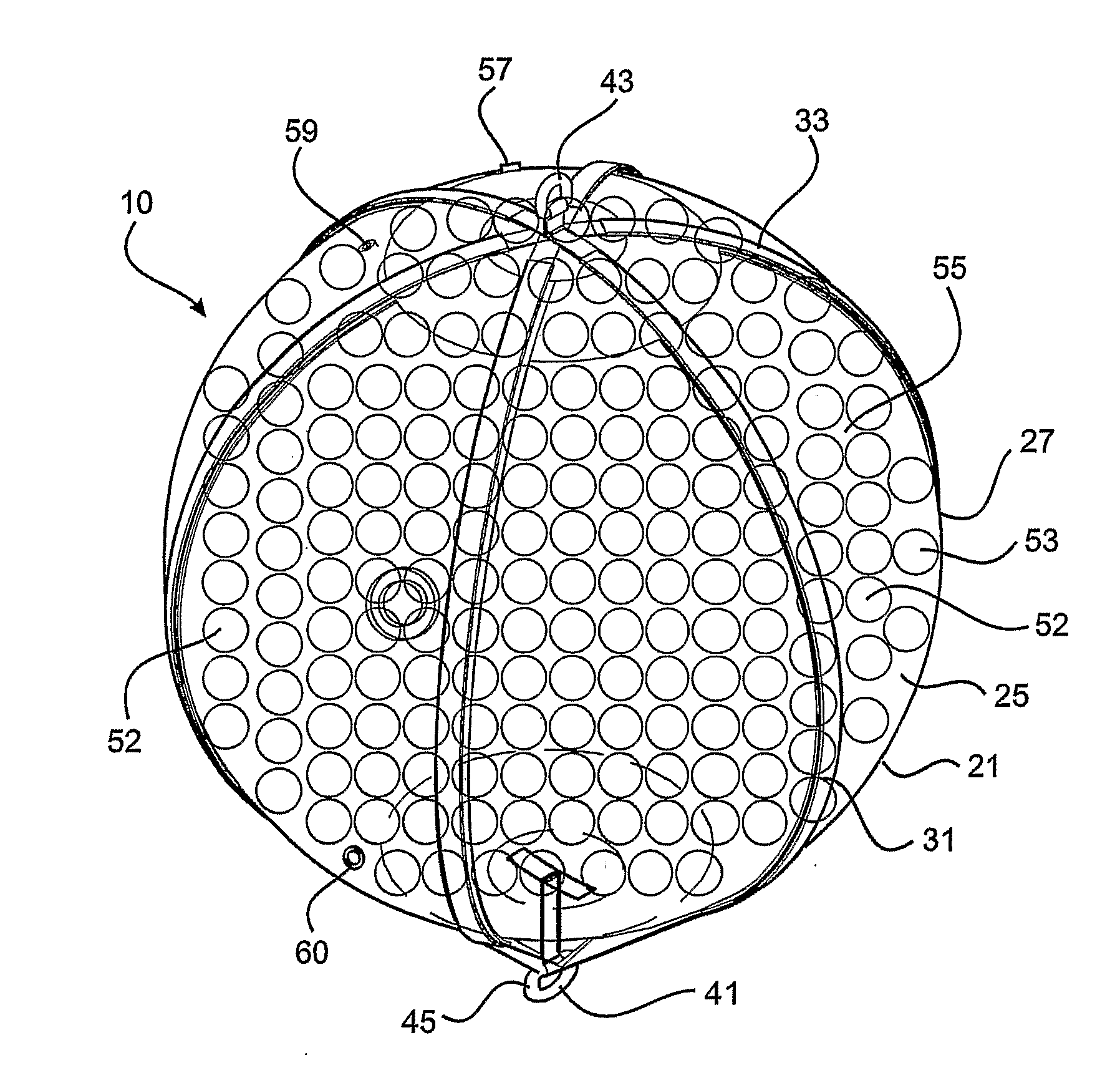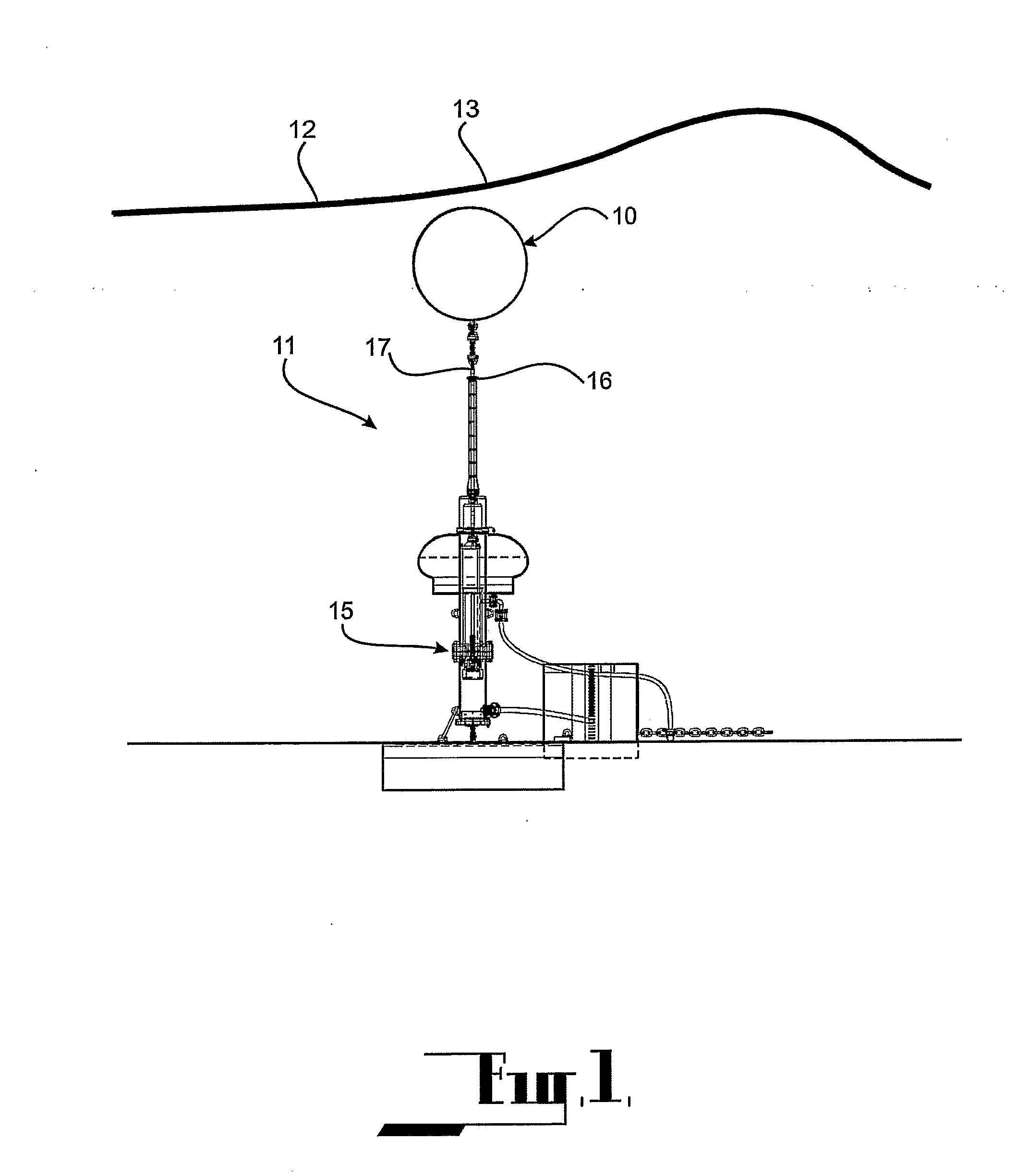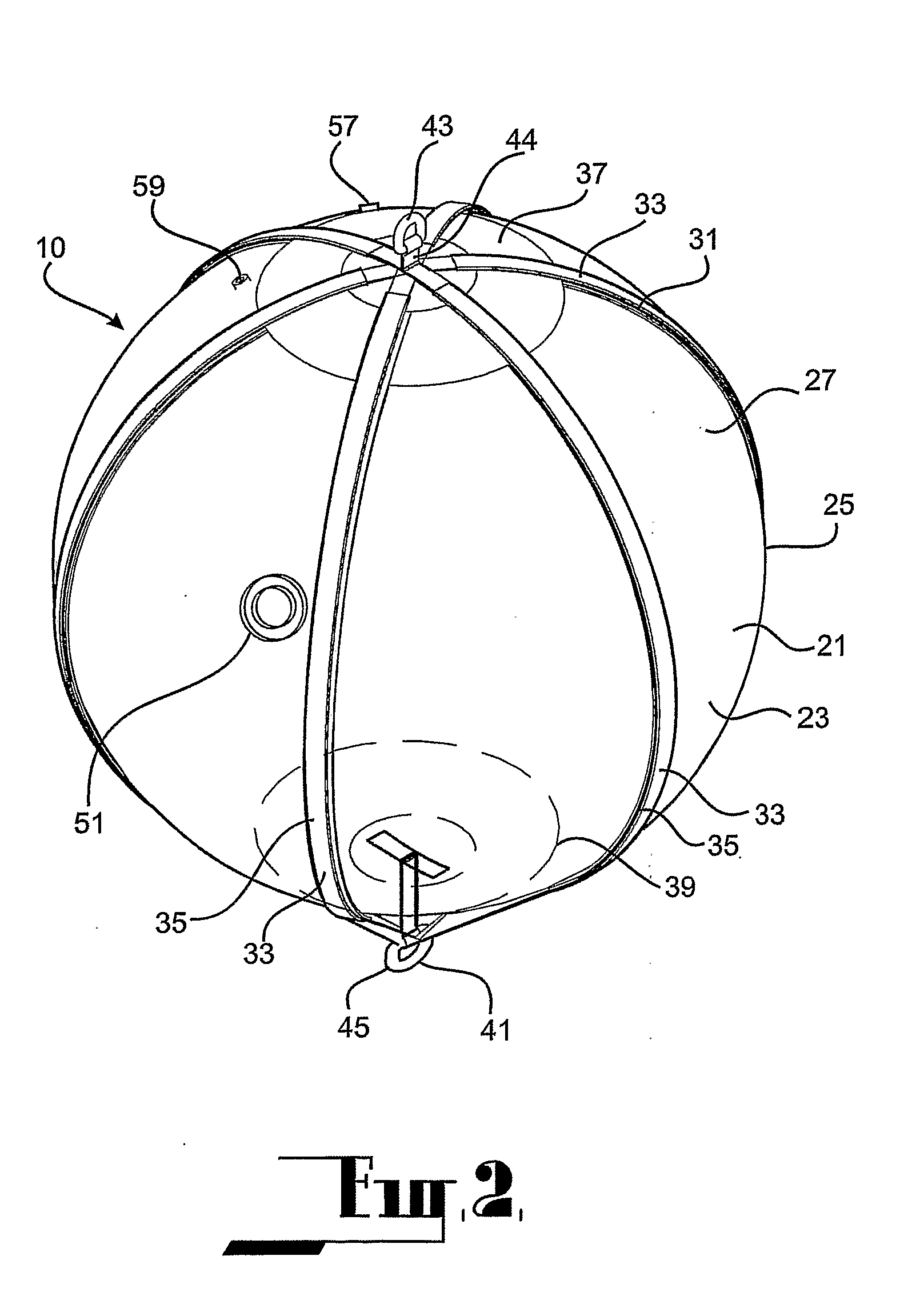Buoyant actuator
a technology of buoyant actuators and actuators, which is applied in the direction of electric generator control, special-purpose vessels, vessel construction, etc., can solve the problems of preventing the operation of the remaining functional parts of the system, and the transportation of hundreds of buoyant actuators to a deployment site would be made extremely difficult and expensive if they had to be transported at full size, so as to reduce the volume of fluid and reduce the uptake of wave energy
- Summary
- Abstract
- Description
- Claims
- Application Information
AI Technical Summary
Benefits of technology
Problems solved by technology
Method used
Image
Examples
first embodiment
[0091]Referring to FIGS. 1 to 5, the buoyant actuator 10 comprises a body 21 defining a chamber 23 of generally spherical configuration. Specifically, the chamber 23 is defined by a generally spherical wall structure 25 comprising an outer skin 27 formed by a pliant membrane. The outer skin 27 may be constructed of panels 28 of the pliant membrane material bonded together. The pliant membrane comprises a fabric reinforced polymer material such as the commercial product Hypalon® that is widely used for the manufacture of marine buoys and fenders. This material may be glued to itself to form tough waterproof joints as is familiar to persons experienced in this process.
[0092]The wall structure 25 further comprises a reinforcement means 31 extending between upper and lower locations on the body 21. The reinforcement means 31 comprise a plurality of external reinforcing straps 33 configured as hoops 35 extending circumferentially along the surface of the outer skirt 27 and extending thr...
fourth embodiment
[0123]Referring now to FIGS. 12 to 15, the buoyant actuator 10 has provision to respond to, and recover from, storm conditions without recourse to an external system as do the two previous embodiments.
[0124]In this embodiment, the buoyant actuator 10 comprises a body 101 having a buoyant section 103 below which there is a chamber 105. The chamber 105 is defined by an outer skin 106 comprising cylindrical side wall 107 depending from the buoyant section 103 and a bottom wall 109 which tapers inwardly and downwardly. The side wall 107 and the bottom wall 109 are of pliant material. Specifically, the side wall 107 and the bottom wall 109 are constructed using the same materials and methods employed in relation to the outer skin 27 of the first embodiment.
[0125]The bottom wall 109 incorporates reinforcement means 111 comprising straps 113 attached to, and extending inwardly from, a circumferential reinforcing ring 115 at the outer periphery to a central location 117 at which there is a...
fifth embodiment
[0136]Referring now to FIGS. 16 to 21, the buoyancy actuator 10 is similar to that of the previous embodiment and so like reference numerals are used to identify corresponding parts. In this embodiment, the chamber 105 below the buoyant section 103 is defined by a generally conical downwardly tapering wall structure 131 terminating at reinforced bottom section to which an anchoring point 119 is attached.
[0137]In order to maintain the required degree of buoyancy, supplementary buoyancy is provided to the body. The supplementary buoyancy is provided by a plurality of smaller spherical floats 133 attached to the upper surface of the buoyant section 103.
[0138]This embodiment operates in a similar fashion to the previous embodiment, utilising valves 121, 122.
[0139]It may not be possible to utilise the leaky seam as a one-way valve in this embodiment as the effect of the conical shape on the bending of the skin would make it difficult to apply this technique. Normal one-way valves are th...
PUM
 Login to View More
Login to View More Abstract
Description
Claims
Application Information
 Login to View More
Login to View More - R&D
- Intellectual Property
- Life Sciences
- Materials
- Tech Scout
- Unparalleled Data Quality
- Higher Quality Content
- 60% Fewer Hallucinations
Browse by: Latest US Patents, China's latest patents, Technical Efficacy Thesaurus, Application Domain, Technology Topic, Popular Technical Reports.
© 2025 PatSnap. All rights reserved.Legal|Privacy policy|Modern Slavery Act Transparency Statement|Sitemap|About US| Contact US: help@patsnap.com



